 |
Foodoric and associated companies are chemicals manufacturing companies operated in India USA UAE Europe and Asia other countries around the world. The associates have one or more of certifications like ISO-9001, ISO-14001, ISO-22000:2005, FSSC 22000; OHSAS 18001; Kosher and Halal Certified; HACCP, FSSAI and FDA - GMP approval. Buyers are assured of good quality and CIF wholesale and retail price for supplies of our Citric Acid. |
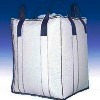
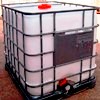
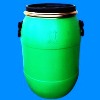
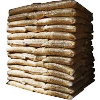
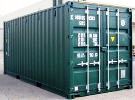
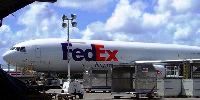

Citric Acid Solutions n Crystal BP IP USP ACS Reagent FCC Food Grade Manufacturers Suppliers
Citric Acid
Pure

Citric Acid Anhydrous CAS Number 77-92-9, Molecular Weight 192.13, Chemical Formula C6H8O7
Citric Acid Monohydrate CAS Number 5949-29-1, Molecular Weight 210.14, Chemical Formula C6H8O7.H2O
Citric Acid FCC Food Grade Specifications
C6H8O7 Formula wt, anhydrous 192.13
C6H8O7·H2O Formula wt, monohydrate 210.14
INS: 330 CAS: anhydrous [77-92-9]
CAS: monohydrate [5949-29-1]
DESCRIPTION
Citric Acid occurs as colorless, translucent crystals or as a white, granular to fine, crystalline powder. It is anhydrous or contains one molecule of water of hydration. The hydrous form is efflorescent in dry air. It is odorless and has a strongly acid taste. One gram is soluble in about 0.5 mL of water, in about 2 mL of alcohol, and in about 30 mL of ether.
REQUIREMENTS
Identification: A 1:10 aqueous solution gives positive tests for Citrate.
Assay: Not less than 99.5% and not more than 100.5% of C6H8O7, calculated on the anhydrous basis.
Lead: Not more than 0.5 mg/kg.
Oxalate: Passes test.
Readily Carbonizable: Substances Passes test.
Residue on Ignition: Not more than 0.05%.
Tridodecylamine (for solvent-extracted Citric Acid only):
Not more than 0.1 mg/kg.
Water: Anhydrous: Not more than 0.5%; Monohydrate: Not more than 8.8%.
Citric Acid Monohydrate BP Ph Eur
C6H8O7-H2O -- 210 -- CAS 5949-29-1
DEFINITION
2-Hydroxypropane-1,2,3-tricarboxylic acid monohydrate.
Content: 99.5 per cent to 100.5 per cent (anhydrous substance).
CHARACTERS
Appearance: White or almost white, crystalline powder, colourless crystals or granules, efflorescent.
Solubility: Very soluble in water, freely soluble in ethanol (96 per cent).
IDENTIFICATION
First identification B, E.
Second identification A, C, D, E.
A. Dissolve 1 g in 10 ml of water. The solution is strongly acidic.
B. Infrared absorption spectrophotometry.
C. Add about 5 mg to a mixture of 1 ml of acetic anhydride and 3 ml of pyridine. A red colour develops.
D. Dissolve 0.5 g in 5 ml of water, neutralize using 1 M sodium hydroxide (about 7 ml), add 10 ml of calcium chloride solution R and heat to boiling. A white precipitate is formed.
E. Water (see Tests).
TESTS
Appearance of solution:
The solution is clear and not more intensely coloured than reference.
Dissolve 2.0 g in water and dilute to 10 ml with the same solvent.
Readily carbonizable substances:
To 1.0 g in a cleaned test tube add 10 ml of sulphuric acid and immediately heat the mixture in a water-bath at 90 ± 1 °C for 60 min. Cool rapidly immediately afterwards. The solution is not more intensely coloured than a mixture of 1 ml of red primary solution and 9 ml of yellow primary solution.
Oxalic acid:
Maximum 360 ppm, calculated as anhydrous oxalic acid.
Sulphates:
Maximum 150 ppm.
Aluminium:
Maximum 0.2 ppm, if intended for use in the manufacture of dialysis solutions.
Heavy metals: Maximum 10 ppm.
Water:
7.5 per cent to 9.0 per cent, determined on 0.500 g.
Sulphated ash: Maximum 0.1 per cent, determined on 1.0 g.
Bacterial endotoxins:
Less than 0.5 IU/mg, if intended for use in the manufacture of parenteral dosage forms without a further appropriate procedure for the removal of bacterial endotoxins.
Citric Acid Monohydrate USP
C6H8O7·H2O 210.14
1,2,3-Propanetricarboxylic acid, 2-hydroxy-, monohydrate.
Citric Acid Monohydrate contains one molecule of water of hydration. It contains not less than 99.5 percent and not more than 100.5 percent of C6H8O7, calculated on the anhydrous basis.
Labeling: Where it is intended for use in dialysis solutions, it is so labeled. Where Citric Acid Monohydrate must be subjected to further processing during the preparation of injectable dosage forms to ensure acceptable levels of bacterial endotoxins, it is so labeled. Where Citric Acid Monohydrate is sterile, it is so labeled.
Identification, Infrared Absorption 197K: Dry the substance to be examined at 105 for 2 hours.
Bacterial endotoxins: The level of bacterial endotoxins is such that the requirement in the relevant dosage form monograph (s) in which Citric Acid Monohydrate is used can be met.
Sterility: Where the label states that Citric Acid Monohydrate is sterile, it meets the requirements for Sterility, in the relevant dosage form monograph(s) in which Citric Acid Monohydrate is used.
Water: between 7.5% and 9.0%.
Residue on ignition: Not more than 0.1%, determined on 1.0 g.
Readily carbonizable substances: To pass the test
Sulfate: 0.015%.
Heavy metals: 0.001%.
Limit of oxalic acid: 0.036%.
Citric Acid ACS Reagent
Citric Acid, Anhydrous, and Citric Acid, Monohydrate
2-Hydroxy-1,2,3-propanetricarboxylic Acid
HOCOCH2C(OH)(COOH)CH2COOH; Formula Wt. 192.13
HOCOCH2C(OH)(COOH)CH2COOH-H2O; Formula Wt. 210.14
CAS Number 77-92-9 (Anhydrous); 5949-29-1 (Monohydrate)
REQUIREMENTS
Assay: 99.5% C6H8O7; 99.0-102.0% C6H8O7-H2O min
MAXIMUM ALLOWABLE
Insoluble matter: 0.005%
Residue after ignition: 0.02%
Chloride (Cl): 0.001%
Oxalate (C2O4): Passes test
Phosphate (PO4): 0.001%
Sulfate (SO4): 0.002%
Iron (Fe): 3 ppm
Lead (Pb): 2 ppm
Substances carbonizable by hot sulfuric acid: Passes test.

Citric Acid Manufacturers Suppliers:
Foodoric Group of Cos
India, USA, UAE, Europe
e-mail: info@foodoric.com

Copyright
Last
14 March, 2022
Citric Acid Solution and Crystals BP IP USP ACS Reagent FCC Food Grade Suppliers, Exporters, Importers, Manufacturers offering good CIF wholesale and retail prices, quality and online information.
A jackal woke up early in the morning and went in to the plains. He looked at his long shadow in the rising morning sun and said to himself, "I must have a camel for my meal today".
He kept moving around till noon and it was getting hot and the jackal was tired. He was also hungry and thirsty. He looked at his small shadow in the mid-day sun. He murmered, "I was only joking about the camel, a mouse will do".